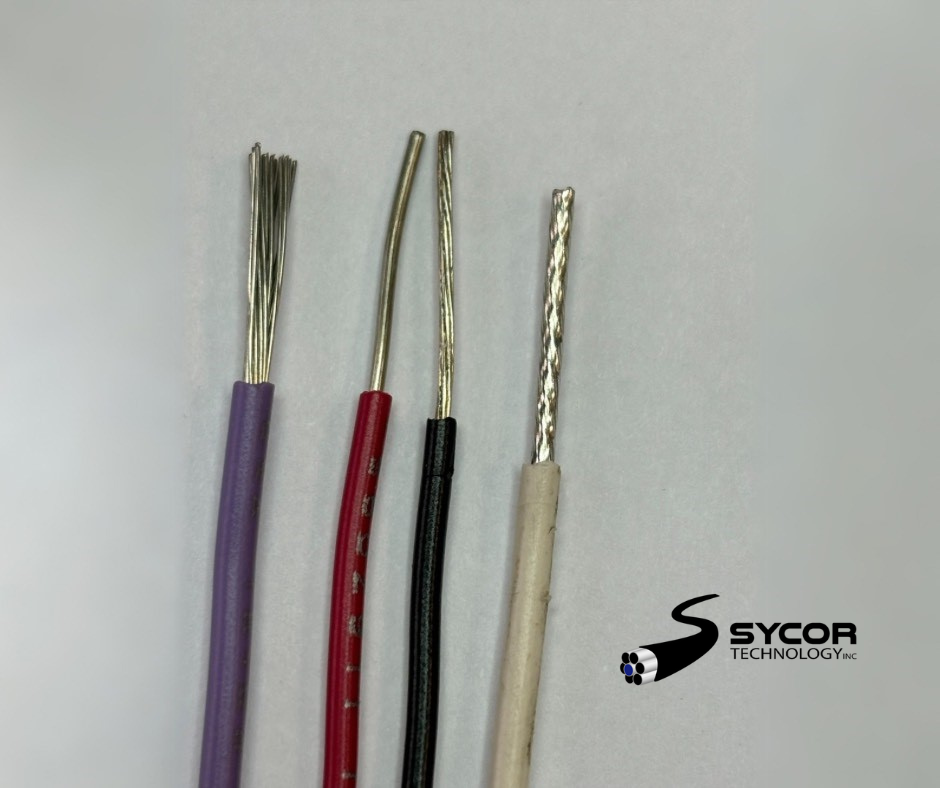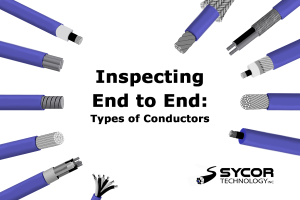
Conductor plating is a critical process in the manufacturing of electrical and electronic wire and cable. This metal layer can enhance the conductor’s performance, durability, and resistance to various environmental factors. The choice of plating material depends on the intended application, cost considerations and desired electrical properties. In this blog we will explore the different types of wire conductor plating and discuss their respective advantages and applications.
Tin Plating
Tin plating is one of the most common methods used for coating electrical wire and cable conductors. The primary reason for its widespread use is its ability to prevent corrosion and oxidation, which can significantly degrade the conductor’s performance over time. Tin is also known for its excellent solderability, making it an ideal choice for wiring applications where soldering is required for assembly.
Moreover, tin is relatively inexpensive compared to other plating materials, which makes it an economical choice for large scale manufacturing. Tin plated conductors can suffer from a phenomenon known as “tin whiskers” which are tiny, hair like metallic growths that can cause short circuits in electronic devices/ despite this, the overall benefits of tin plating continue to make it a popular choice in the industry.
Tin plating can be applied by varying methods to achieve desired characteristics. These methods include:
Basic Tinned Coating: Each individual strand of copper wire is coated with a thin later of tin alloy through a hot-dip or electroplating process. The tin coat prevents corrosion and aids in solderability. These wires meet CSA, UL and Mil-spec standards.
Pre-fusing (Pre-bonding): Each individual strand of copper is coated with a heavier layer of tin alloy, twisted, and then heated to fuse the strands over the entire length. Although this method will present a more-or-less solid conductor, it will retain more flexibility than its solid counterpart. These wires meet CSA, UL, and Mil-spec standards.
Tin Overcoating: Each individual strand of copper is individually coated, then twisted, and then an overcoat of tin is applied over the entire conductor. This method will present as a solid conductor with excellent solderability but will be much less flexible than basic tinned conductors. These wires meet CSA and UL, but not Mil-spec.
Topcoat Tinning: Bare copper strands are twisted, and an overall tin coating is applied to the conductor. Although this method will provide corrosion resistance and aid in solderability, the tin coat may not be uniform over the individual strands. These wires meet CSA and UL, but not Mil-spec.
Silver Plating
Silver Plating is known for its exceptional conductivity, surpassing even copper and tin. It provides low electrical resistance and high thermal conductivity, making it ideal for wiring applications where minimizing signal loss and heat buildup is critical. Silver plated conductors are commonly used in high frequency circuits, RF connectors, and audio equipment where signal integrity is paramount. Despite its excellent conductivity, silver plating is prone to tarnishing when exposed to sulfur containing environments, which can affect its performance over time. However, advancements in protective coatings have mitigated this issue, making silver plating a preferred choice in many demanding wiring applications. While silver plating may be costlier compared to other plating materials, its superior electrical properties justify the investment in scenarios where performance is paramount.
Nickel Plating
Nickel plating is used in wiring applications that require high wear resistance, stability under high temperatures and protection against harsh environments. Nickel has a high melting point and provides excellent barrier properties which can extend the life of the underlying conductor by preventing corrosion and wear.
Also, nickel plated conductors exhibit good thermal conductivity and are suitable for use in high temperature wiring applications. However, nickel is not as conductive as copper or tin, which can be a drawback in applications where electrical conductivity is a primary concern. Nevertheless, the durability and stability of nickel plating make it an excellent choice for industrial aerospace wiring applications for instance.
The selection of conductor plating material is a critical decision in the design and manufacture of electrical and electronic wire and cable. Tin, silver, and nickel plating each offer distinct advantages and are suited for different applications. Tin is favored for its solderability and cost effectiveness, nickel for durability and resistance to high temperatures, silver for offering exceptional conductivity and suitability for high frequency applications. Understanding the unique properties and applications of these plated copper wires can help manufacturers and engineers make informed choices that optimize the performance and longevity of their products.
Consider Sycor for top-quality plating solutions, including tin plating and specialized techniques. Ensure reliability and longevity in your products with Sycor.
For more information about us:
Call Toll Free - 1.800.268.9444 or Email Us - [email protected]





